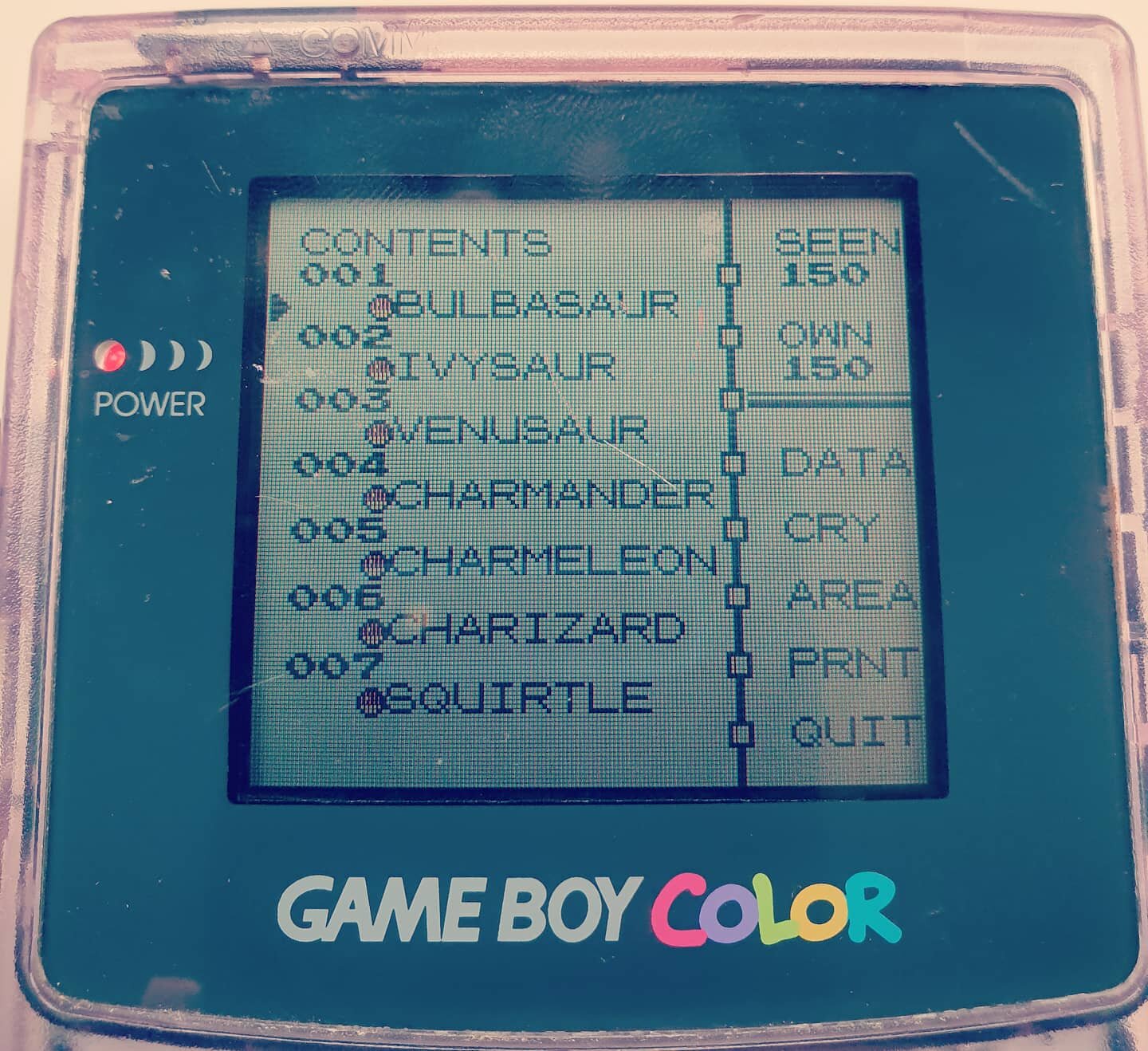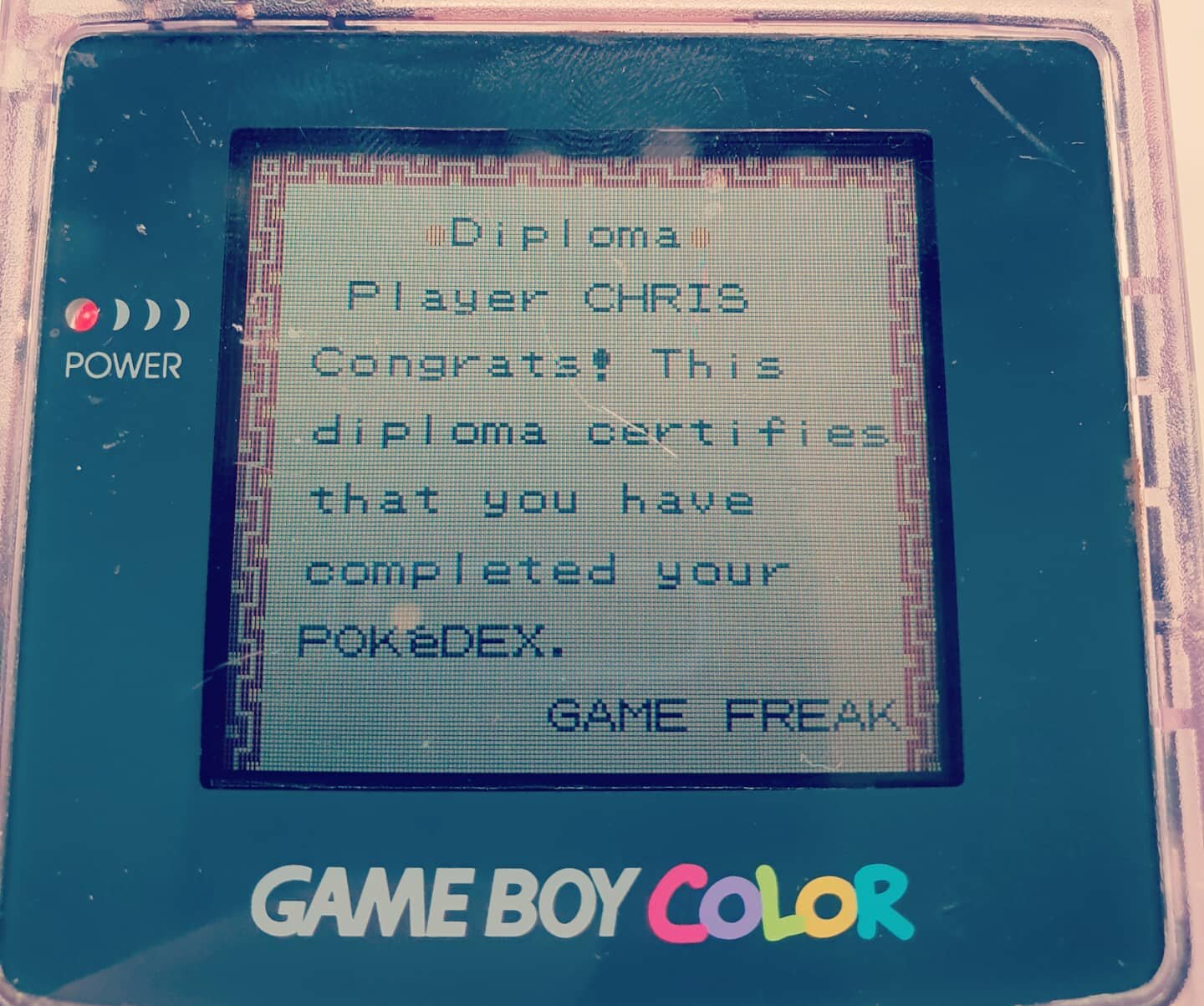Glasgow, UK • February 2021 • Length of Read: 10 Minutes
I’m writing this on the week of the 25th anniversary of Pokémon, with the highest-grossing media franchise of all time showing no signs of stopping as the demand for the Trading Card Game far outstrips the supply. The prices of rare holographic cards have hit eye-watering values and if there was ever a time to dig out your old binder from the attic, then it is now. A literal treasure chest of nostalgia.
My childhood is scattered with memories of the franchise, swapping trading cards in the playground, rushing home from school to watch the cartoon series, and spending countless hour bashing the A and B buttons on my GameBoy as I battled through the Generation 1 Kanto Region; seeing off my rival and the Elite Four on my way through Indigo Plateau to become League Champion. Despite the countless number of times I played through the game, however, one thing had always eluded me from becoming a ‘Pokémon Master’ and fulfilling my ‘destiny’ as the show’s theme song describes, and that was to catch and record all 150 Pokémon in the Pokédex given to you by Prof. Oak at the start of the game.
And for good reason. Not only are some Pokémon ridiculously difficult to catch, such as Kangaskhan in the Safari Zone or the legendary birds roosting in difficult to reach locations, but it’s impossible to catch ‘em all with just one game cartridge. Nintendo released three different versions of the original game: Pokémon Blue, Pokémon Red and Pokémon Yellow: Special Edition. Not only do you have to trade between these games for some Pokémon to evolve, such as Golem or Gengar, but there are also certain Pokémon that are version-specific. You can only catch a Magmar, for example, in Blue, and you can only find Electabuzz in Red. Suddenly, the difficulty of the task becomes very apparent.
Then there are the in-game decisions which, depending on your choices also limit your ability to complete the Pokédex. For instance, in Red and Blue, you have to select a starter from either Charmander, Bulbasaur or Squirtle, immediately preventing you from obtaining the other two and any of their evolutions. Six gone already. Then there is the Eevee which you pick up in Celadon City. This can be evolved via stones into one of Vaporeon, Flareon or Jolteon. Another two gone. If it was easy, however, then it wouldn’t be a challenge. With travel off the cards due to pandemic lockdowns, I put a fresh set of batteries in my GameBoy Advance, blew the dust out of my Yellow cartridge, named the rival after my brother for old time’s sake, and dived headfirst into the magical world that had captured my imagination for over two decades.
I chose to start with Yellow for a couple of reasons, 1) You are given Pikachu as a starter so don’t have to make the annoying choice above and 2) It was the only copy of the game I could find when searching my parents’ house. From initial calculations, I worked out that I could catch 130 of the 150 using just this one cartridge, which is a pretty good number to get started with.
The game commences in Pallet Town, the only city in the Kanto Region not named after any colour but an artist’s mixing plate. From here you have to fight your rival for the first time then deliver a package to Prof. Oak in return for the Pokédex so the challenge can officially commence. It’s then a short trip through Viridian Forrest to Pewter City to fight Brock and get the first gym badge. When playing the game as a kid I would run from almost every wild encounter at the beginning of the game, not interested in catching such common and weak Pokémon as Caterpie and Pidgey, but this time I was on a mission. I caught everything available before picking up the Old Amber fossil which is used to resurrect Aerodactyl on Cinnabar Island.
After defeating Brock I then made the long journey through on Mount Moon, picking up a Zubat and Clefairy, the latter of which can be traded for a Mr Mime from a person at the entrance to Digglet Cave. I also used a moonstone to evolve Nidorino into Nidoking, the choice of speedrunners and a ridiculously powerful Pokémon to have this early in the game. It’s also in Mt. Moon where you are forced to make the first limiting decision: the Helix fossil which can be turned into Omanyte, or the Dome fossil which can be turned into Kabuto. I made a note of my choice and battled through to Cerulean City where I defeated Misty, the trainers on Nugget Bridge and got the SS. Anne ticket from Bill. In Yellow, you can also get both Charmander and Bulbasaur from just talking to in-game characters, providing Pikachu’s happiness level is high enough. Similar to how Ash in the cartoon never evolves his Pikachu, it’s impossible to do so in Yellow meaning that Raichu is also off the cards. The image below (credit: Jrose11 on YouTube) depicts the 20 Pokémon I was unable to catch in Yellow alone due to the above restrictions.
YouTube: Jrose11
Over the proceeding weeks I played through Yellow every spare opportunity I got, spending hours at a time wandering through grassy areas searching for rare encounters and battling every wild Pokémon that crossed my path to slowly level up and evolve those I’d caught. I completed the game in the process, using the Masterball to catch Mewtwo and spending all my hard-earned cash in the Game Corner until I had enough coins to purchase the prized Porygon. In the Safari Zone, I biked around aimlessly for days until I’d managed to snare a Tangela and Pinsir, and the same in Cerulean Cave until I picked up a Chansey and Rhydon. When my Pokédex finally hit 130, after 60 hours of gameplay, it felt like a huge milestone had been reached.
With Yellow completed, it was time to turn my attention to Red and Blue, with the first challenge being to obtain working copies of the games themselves. After a couple of outbid eBay auctions, I finally got my hands on a copy of Red for £13.99 from a pawn shop in Blackpool. Having built up unnecessarily intricate knowledge of the game I raced through the early stages, this time selecting the Helix instead of Dome Fossil, the Hitmonchan instead of Hitmonlee, and catching a Pikachu that could be evolved using a Thunderstone. I also managed to find the version-exclusive Electabuzz in the depths of the Power Plant and chose a different Eeveelution.
The next stage in my quest was to find a way of transferring Pokémon between game cartridges. I borrowed a GameBoy Colour from my brother and purchased a link cable for £8.99 from Amazon for next day Prime delivery. This worked a treat, and I began the time-consuming process of trading Pokémon one-by-one and back-and-forth between games, using this opportunity to also evolve my Graveler, Haunter and Kadabra into Golem, Gengar and Alakazam respectively – the three of which only evolve through trading and not by level-up. When all was said and done, my Pokédex now stood at 146, with only Vaporeon, Meowth, Persian and Magmar left to catch.
After two weeks of scouring eBay daily, I won an £18.99 auction for a copy of Blue which was delivered painfully slowly via 2nd Class Royal Mail. It was then a formality of blasting through the game to the Pokemon Mansion on Cinnabar Island where I found a wild Magmar on the 3rd floor. I then transferred it along with the Meowth and Vaporeon into Yellow where my Pokédex climbed to 149. After a final morning spent levelling up Meowth it eventually evolved into Persian and I let out a jubilant cry. The level of elation that fit the image of a 30-year-old man sitting in his pants and simultaneously playing two GameBoy consoles for hours on end. All that was left was to collect my prize.
I had Charizard fly to Pallet Town and I entered Prof. Oaks’s lab, the place where this whole journey began. The most painful to catch of the 150 must have been Tauros, which constantly ran away no matter what combination of bait or rocks I threw at it. The most painful to level up was Dratini. I caught it by fishing rod at Lv. 10 and lost count of the number of Onix I had to water gun until it finally evolved into its final form of Dragonite at Lv. 55. My favourite? Clefable. Alongside Nidoking, I had it Body Slam and Blizzard through the Elite Four dozens of times and it was the only Pokémon to reach Lv. 99.
So what does Prof. Oak say to you after affirming his life’s work? ‘Your Pokédex is fully complete! Congratulations!’ That’s it. No hidden prize. No Easter Egg unlocked. Just: Congratulations!
Underwhelmed, I headed back to Celadon City to speak to the Game Freak developers holed up in one of the buildings next to the department store. There I was rewarded with a diploma for my achievement, not quite the fanfare I was hoping for, but some recognition nonetheless. Receipt of the diploma brought down the curtain down on quite the adventure, a trip down memory lane that had me fall back in love with the gameplay, characters and world that had engrossed my youth. It was almightily satisfying to cross off this Bucket List item, but also prompted me to enter the Trading Card Game hobby again and continue to Catch ‘Em all!
























